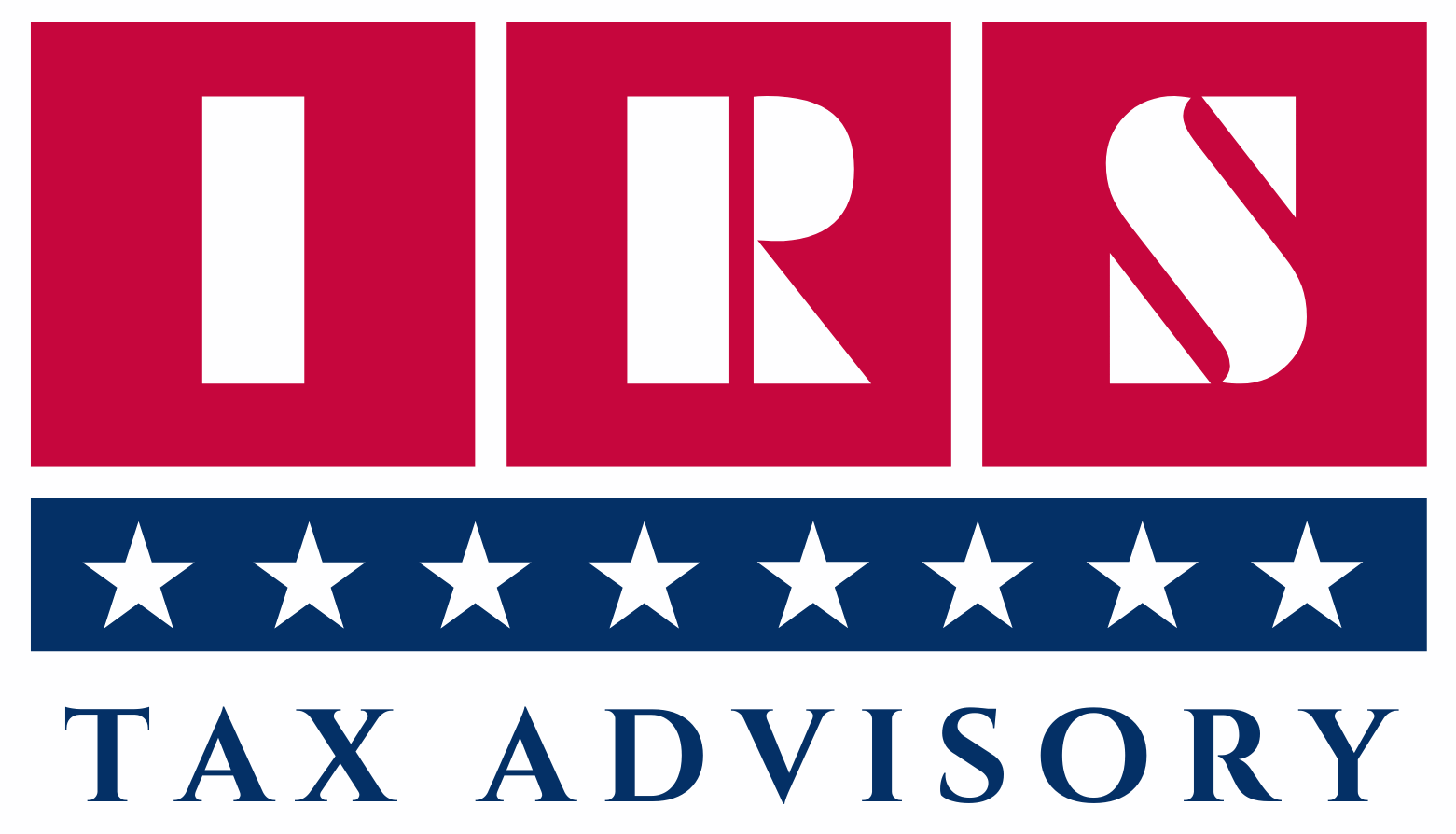True Ups Accounting- Detailed Overview In 2025
Table of Contents
What is a True Ups In Accounting?

A True Up is the process of reconciling actual payments or contributions against estimated or provisional amounts made earlier, ensuring the final amount matches the true liability or obligation. It’s a financial adjustment step that corrects underpayments or overpayments. It commonly occurs in areas like payroll taxes, employee benefits, and retirement plan contributions, where payments are initially made based on projections or partial data.
Once the full data becomes available—typically at the end of a quarter or year—the true-up adjusts for any differences by requiring additional payments if underpaid or issuing refunds or credits if overpaid. This process helps businesses and individuals avoid penalties, maintain accurate financial records, and ensure that obligations are properly met.
True Ups are common in areas like payroll taxes, employee benefits, insurance premiums, retirement plan contributions, and even tax payments.
Why are True Ups Important?
True ups are important because they ensure that payments and contributions accurately reflect the actual amounts owed, preventing costly underpayments or overpayments. By reconciling estimated figures with real data, true ups help businesses stay compliant with tax laws and regulatory requirements, avoiding penalties and interest charges. They also promote transparency and accuracy in financial reporting, which is essential for audits and maintaining trust with employees and stakeholders. Ultimately, true ups protect both organizations and individuals by ensuring obligations are met fairly and precisely.
- Accuracy: Ensures businesses and employees pay the correct amount — no more, no less.
- Compliance: Helps comply with IRS rules, ERISA (for benefits), and insurance regulations.
- Avoid Penalties: Prevents underpayment penalties and interest.
- Transparency: Maintains clear accounting and reporting for audits and reviews.
Common Areas Where True Ups Apply
1. Payroll Tax True Ups
Companies often estimate payroll taxes during the year. At year-end or quarterly, they “true up” by reconciling actual wages and taxes owed versus what was estimated and paid.
2. Employee Benefits True Ups
Employer contributions for health insurance, retirement plans, or other benefits may be estimated upfront. True ups ensure final payments align with actual coverage or employee participation.
3. Retirement Plan Contributions True Ups
For 401(k) and other plans, employers must ensure contributions meet plan requirements and IRS limits, adjusting through true ups if necessary.
4. Insurance Premium True Ups
Insurance premiums (especially for group policies) are often based on estimates (like projected payroll). True ups adjust premiums after actual data is available.
How Does a True Up Work?
A True Up works as a reconciliation mechanism designed to align estimated payments or contributions with actual amounts due. The process generally follows a systematic approach involving several key steps:
1. Initial Estimation and Payment
At the start of a reporting period—whether quarterly, monthly, or annually—payments or contributions are often made based on estimated figures. For example, employers may estimate payroll taxes or employee benefit contributions using projected wages or participation levels because the complete data is not yet available.
2. Data Collection and Finalization
As the reporting period concludes, actual data becomes available. This could be finalized payroll records, actual employee participation in benefit plans, or true insurance premiums based on real payroll numbers. Gathering accurate, complete data is crucial for the true-up process to work effectively.
3. Reconciliation of Estimates vs. Actuals
The core of the true-up process involves comparing the previously estimated payments with the finalized actual amounts. This step identifies whether the initial payments were too low (underpaid) or too high (overpaid).
4. Adjustment Payment or Credit
- If underpaid: The difference must be paid to the relevant party (e.g., IRS, insurance company, retirement plan). This additional payment is called the “true-up payment” and ensures the total amount paid matches the actual liability.
- If overpaid: The excess amount may be credited toward future payments or refunded, depending on the rules governing the payment type.
5. Reporting and Documentation
The true-up results must be properly documented and reported. For taxes, this may involve updating payroll tax filings such as Form 941 or Form 940. For benefits or retirement plans, the adjustments may be reflected in annual reports or employee statements.
True Ups in Payroll Taxes
Payroll taxes include Social Security, Medicare, federal income tax withholding, and sometimes state and local taxes. Employers are responsible for withholding and remitting these taxes on behalf of employees and matching certain amounts (e.g., Social Security and Medicare). Since employee wages and hours can vary during the year, initial payroll tax payments are often provisional estimates.
How Does the Payroll Tax True Up Work?
1. Quarterly Tax Deposits
Throughout the year, employers submit estimated payroll tax payments each quarter, typically through Form 941 (Employer’s Quarterly Federal Tax Return). These payments are based on the wages paid and taxes withheld during that quarter.
2. Year-End Wage Review
At the end of the year, employers review the total wages paid to employees and total payroll taxes withheld and paid. This review ensures that the cumulative payroll tax payments align with the actual amounts due.
3. Reconciliation of Payroll Taxes
The employer compares the payroll taxes paid with the taxes actually owed based on total wages for the year. If there is a shortfall—meaning taxes were underpaid during the year—the employer must make a true-up payment to cover the difference.
4. Adjustments and Corrections
Any underpayment is typically corrected with the final Form 941 filing or via an additional payment. Overpayments can sometimes be credited toward future deposits or refunded after filing.
5. Reporting and Documentation
Employers issue Form W-2 to employees at year-end, which reflects the total wages and taxes withheld. Accurate true ups ensure W-2 forms report correct tax amounts for employees’ personal tax filing.
Example: Payroll Tax True Up Process
ABC Company makes quarterly payroll tax deposits based on estimated wages. At year-end, actual payroll data shows $12,000 more payroll tax owed due to late bonuses and overtime. ABC calculates the difference between total estimated payments ($103,000) and actual liability ($115,000) and pays the $12,000 true-up amount with the final Form 941 filing, ensuring accurate tax compliance and reporting.
True Up in Retirement Plans
A True Up in Retirement Plans is a year-end reconciliation process employers use to ensure that their matching contributions to employee retirement plans, such as 401(k)s, fully comply with the terms of the plan and IRS regulations. Because employee deferral amounts and compensation can fluctuate throughout the year, employers often make estimated or periodic matching contributions. The true-up process guarantees that employees receive the full match they are entitled to, even if their contributions or pay timing varied during the year.
- Employers match employee 401(k) contributions up to a limit.
- At year-end, employers perform a true up to ensure matching contributions meet the plan’s promise.
- If initial matches were insufficient, employers make additional true-up contributions.
- These true ups are reported to employees via Form 1099-R if distributions occur, and to the IRS via the plan’s annual filings like Form 5500.
Example of Retirement Plan True-Up Process:
XYZ Corp matches 50% of employee 401(k) contributions up to 6% of salary each pay period. An employee contributes unevenly during the year, underutilizing the match early on. At year-end, XYZ Corp reviews total contributions and makes an additional true-up contribution to fully match the employee’s eligible deferrals, ensuring the employee receives the maximum employer match allowed.
Employee Benefits True Ups
What is an Employee Benefits True Up?
An Employee Benefits True Up is the process of reconciling estimated or preliminary employee benefit contributions or costs with the actual amounts determined at the end of a plan year or measurement period. This adjustment ensures that the employer’s and employee’s contributions, as well as benefits provided, accurately reflect the final calculations based on actual payroll data, hours worked, or employee eligibility.
Why Are Employee Benefits True Ups Important?
Employee benefit programs—such as health insurance premiums, retirement plan contributions, flexible spending accounts, and wellness incentives—often require estimates or assumptions when calculating contributions throughout the year. Variations in wages, hours worked, or changes in eligibility can cause differences between what was paid or contributed and what should have been.
True ups:
- Ensure fairness by aligning contributions with actual employee data
- Help avoid overpayment or underpayment by the employer or employees
- Maintain compliance with IRS and Department of Labor regulations
- Provide accurate benefit cost allocation for financial reporting
- Support employee trust and satisfaction by guaranteeing correct benefits administration
How Does the Employee Benefits True Up Process Work?
1. Estimate Contributions and Costs
Employers estimate benefit contributions for the year based on payroll projections or participation data.
2. Track Actual Employee Data
Throughout the year, employers track actual wages, hours, or employee eligibility changes affecting benefit costs.
3. Calculate Actual Benefit Costs
At the end of the plan year or measurement period, employers calculate the true benefit costs using actual data.
4. Compare Estimated vs. Actual
Employers compare estimated contributions and costs with the actual amounts owed.
5. Adjust Contributions (True Ups)
Employers or employees make additional contributions or receive refunds to reconcile the differences.
6. Communicate Adjustments
Employers inform employees about any changes in their contributions or benefits due to the true up.
Common Areas for Employee Benefits True Ups
1. Health Insurance Premiums
Adjusting employer and employee premium shares based on actual enrolment and eligibility.
2. 401(k) Employer Match
Trueing up employer matching contributions to ensure employees receive the full match based on annual contributions.
3. Flexible Spending Accounts (FSA)
Reconciling estimated vs. actual employee contributions and reimbursements.
4. Wellness Program Incentives
Adjusting payouts or contributions based on participation and outcomes.
Insurance Premium True Ups
What is an Insurance Premium True Up?
An Insurance Premium True Up is the process of reconciling the estimated insurance premiums paid by an employer or individual with the actual premium owed based on finalized data such as actual payroll, employee counts, or claim experience. This adjustment typically happens after the policy period ends, ensuring that the premium reflects true exposure or coverage usage.
Why Are Insurance Premium True Ups Important?
Insurance premiums for group health, workers’ compensation, or liability coverage are often initially calculated based on estimates—like projected payroll or the number of covered employees. Since actual figures can fluctuate during the policy period, true ups help:
- Ensure the insurer receives accurate premiums based on actual risk exposure
- Prevent employers from overpaying or underpaying insurance costs
- Adjust premiums for changes in workforce size, salary, or claims experience
- Maintain compliance with insurance contracts and regulations
- Provide clear financial accountability and budgeting for employers
How Does the Insurance Premium True Up Process Work?
1. Initial Premium Estimation
Premiums are calculated based on projected payroll, employee counts, or estimated claims at the start of the coverage period.
2. Ongoing Payroll/Employee Data Tracking
Employers track actual payroll and employee eligibility throughout the policy term
3. End-of-Period Data Submission
At the end of the policy period, employers submit actual payroll or employee data to the insurer for premium recalculation.
4. Premium Recalculation by Insurer
The insurer compares estimated premiums with the recalculated premium based on actual data.
5. True Up Adjustment
The insurer issues a bill or refund reflecting the difference between estimated premiums paid and the actual premium owed.
6. Payment or Refund
Employers pay additional premiums if underpaid or receive refunds if overpaid.
Common Types of Insurance Subject to True Ups
- Workers’ Compensation Insurance: Premiums are often based on actual payroll by job classification.
- Group Health Insurance: Premiums can vary based on final employee enrolment and eligibility.
- Liability Insurance: Premiums may adjust based on claims experience or exposure metrics.
Benefits of True Ups
True ups provide significant benefits by ensuring that payments and contributions accurately reflect the actual amounts owed, rather than relying on estimates or projections. This reconciliation process helps businesses and individuals avoid costly underpayments or overpayments, which can lead to penalties, interest, or compliance issues.
True ups enhance financial transparency and accuracy, making accounting records more reliable and easier to audit. They also build trust with employees by guaranteeing that payroll taxes, retirement contributions, and benefits are correctly calculated and delivered. Additionally, true ups enable better financial planning by giving organizations a clear picture of their true liabilities, allowing them to allocate resources efficiently. Overall, true ups are essential for maintaining compliance, reducing financial risks, and fostering confidence among all parties involved.
True ups offer several important advantages for businesses and individuals by ensuring financial accuracy and regulatory compliance. The key benefits include:
1. Accuracy in Payments
True ups correct any discrepancies between estimated and actual amounts owed, preventing underpayments or overpayments.
2. Regulatory Compliance
By reconciling payments, true ups help meet IRS, ERISA, and other regulatory requirements, reducing the risk of penalties and fines.
3. Financial Transparency
True ups maintain clear and accurate financial records, which is essential for audits, reporting, and internal controls.
4. Cost Savings
Avoids interest charges and penalties that result from incorrect payments, ultimately saving money.
5. Employee Trust and Satisfaction
In payroll and benefits contexts, true ups ensure employees receive correct tax withholdings and benefit contributions, enhancing trust and morale.
6. Better Financial Planning
Provides a realistic view of actual liabilities and expenses, helping businesses budget and plan more effectively.
7. Flexibility
Allows for adjustments based on actual performance or participation, accommodating changes throughout the year.
Relevant IRS Forms for True Ups
True ups often require filing or referencing specific IRS forms to properly reconcile estimated and actual tax obligations. Depending on the context—such as payroll taxes, partnership income, retirement plans, or individual tax returns—different IRS forms play crucial roles in the true-up process. Below is a description of the key IRS forms commonly involved in true ups and how they fit into the reconciliation framework.
1. Form 1040 — U.S. Individual Income Tax Return
The primary tax return form filed by individuals. True ups involving personal income, deductions, or credits are ultimately reflected on Form 1040 or its schedules. For example, if a true up adjusts taxable income or withholdings, it impacts the final figures on Form 1040.
2. Schedule C (Form 1040) — Profit or Loss From Business
Used by sole proprietors to report business income and expenses. If a taxpayer true-ups business income based on revised bookkeeping or expense records, Schedule C must be updated accordingly and filed with Form 1040.
3. Form 941 — Employer’s Quarterly Federal Tax Return
Employers use this form to report quarterly payroll taxes withheld and employer-paid Social Security and Medicare taxes. Payroll tax true ups typically occur when quarterly deposits do not match final payroll tax liabilities. Employers adjust final quarter payments or file corrections through Form 941.
4. Form 940 — Employer’s Annual Federal Unemployment (FUTA) Tax Return
True ups related to unemployment tax liabilities are reported on Form 940. Employers reconcile estimated payments made during the year with actual FUTA tax owed.
5. Form 1065 — U.S. Return of Partnership Income
Partnerships file this form to report income, deductions, and credits. True ups in partnership tax items often start at this level when amended returns or adjustments are made, which then flow through to partners’ Schedule K-1s.
6. Schedule K-1 (Form 1065 or 1120S) — Partner’s or Shareholder’s Share of Income, Deductions, Credits
This schedule reports each partner’s or shareholder’s share of the entity’s tax items. True ups involving partnership or S corporation income discrepancies require corrected or amended Schedule K-1s to reflect accurate amounts.
7. Form 8082 — Notice of Inconsistent Treatment or Administrative Adjustment Request
This form is filed by partners or shareholders to notify the IRS of inconsistent treatment of partnership or S corporation items, effectively serving as a true-up notification. It helps reconcile differences between taxpayer returns and entity returns.
8. Form 5500 — Annual Return/Report of Employee Benefit Plan
True ups in retirement plan contributions, such as employer matching adjustments, must be reported on Form 5500 to maintain plan compliance and provide transparency to the IRS and Department of Labor.
9. Form W-2 — Wage and Tax Statement
Employers issue Form W-2 to report wages paid and taxes withheld. Payroll tax true ups may require corrected W-2s if prior statements understated wages or withholding.
Each of these forms plays a specific role in capturing accurate financial and tax information, which is crucial for the true-up process. Proper use and filing of these forms ensure that any discrepancies between estimated and actual amounts are documented, reported, and corrected according to IRS rules. This not only avoids penalties and interest but also ensures transparency and compliance for individuals and businesses alike.
Guidelines & Best Practices for True Ups
True ups are essential financial and tax reconciliation processes that help businesses and individuals correct discrepancies between estimated and actual payments or contributions. To ensure true ups are accurate, compliant, and efficient, following clear guidelines and best practices is critical. Below is an in-depth overview of proven strategies and recommendations for managing true ups effectively.
1. Maintain Accurate and Timely Records
One of the foundational practices for a successful true up is keeping detailed and up-to-date records throughout the reporting period. Whether tracking payroll data, partnership income, or retirement contributions, accurate documentation of payments, contributions, and estimated figures allows for smooth reconciliation when final data becomes available.
2. Regularly Review and Reconcile Interim Payments
Instead of waiting until year-end, businesses should periodically compare estimated payments with actual data. Quarterly or monthly reviews enable early identification of discrepancies, allowing timely adjustments and avoiding large true-up payments or corrections at the end of the year.
3. Understand Relevant Tax and Regulatory Requirements
Each type of true up—whether for payroll taxes, retirement plans, or partnership income—has specific IRS rules, deadlines, and filing requirements. Staying informed about these regulations ensures that adjustments are made within compliance timelines, reducing the risk of penalties and audits.
4. Use the Correct IRS Forms and Documentation
Filing the appropriate forms is crucial. For payroll tax true ups, this may involve Form 941 or corrected W-2s; for partnership true ups, Forms 8082 and amended Schedule K-1s may be necessary. Proper documentation supports transparency and smooth IRS processing.
5. Coordinate with Relevant Stakeholders
Effective communication with payroll providers, plan administrators, tax advisors, and partnership representatives ensures that all parties are aligned. Coordinating true-up activities minimizes errors, ensures consistent reporting, and facilitates timely corrections.
6. Plan for Financial Impact
True ups can result in unexpected payments or refunds. Organizations should forecast potential true-up amounts and set aside reserves as needed. This proactive financial planning avoids cash flow surprises and helps manage budget expectations.
7. Leverage Technology and Automation
Utilizing payroll software, accounting systems, and tax compliance tools can streamline data collection, comparison, and reporting processes. Automated alerts for discrepancies and integration with tax filing platforms improve accuracy and efficiency.
8. Conduct Training and Maintain Expertise
Staff responsible for payroll, benefits, and tax reporting should be well-trained on true-up processes and regulatory updates. Ongoing education reduces errors and helps organizations adapt to changing tax laws.
9. Document True Up Procedures and Policies
Having formal, written policies outlining how true ups are handled within an organization ensures consistency and accountability. Clear procedures provide a roadmap for staff and support audit readiness.
10. Address True Ups Promptly
Timeliness is critical. Delaying true-up corrections can increase penalties, interest, and compliance risks. Address discrepancies as soon as they are identified to maintain good standing with tax authorities and stakeholders.
True Up Calculation
What is a True Up Calculation?
A true up calculation is the process of reconciling the difference between estimated payments or contributions made during a period and the actual amounts owed based on final data. True ups ensure accuracy in financial reporting and tax compliance by correcting underpayments or overpayments.
Why is True Up Calculation Important?
During the year, payments like payroll taxes, employer retirement plan contributions, or partnership income allocations are often estimated or made periodically. Due to changes in wages, bonuses, or other factors, the actual amount owed can differ. True up calculations correct these differences to:
- Ensure regulatory compliance
- Avoid penalties and interest
- Maintain accurate financial records
- Guarantee employees or partners receive correct benefits or income shares
Step-by-Step True Up Calculation Process
Step 1: Collect Data
Gather all relevant data for the period, including:
- Total actual compensation or income
- Total contributions or payments already made
- Payroll records, tax filings, or partnership statements
Step 2: Determine the True Up Basis
Identify the formula or basis for calculating the obligation. For example:
- Payroll tax: Apply IRS tax rates to actual wages
- Retirement match: Employer match percentage on actual employee contributions
- Partnership income: Share of partnership profits or losses based on ownership percentage
Step 3: Calculate Actual Liability
Using the actual data and applicable rates or formulas, calculate the total amount owed for the period.
Step 4: Compare with Amounts Paid
Subtract the total payments or contributions made during the year from the actual liability:
True Up Amount=Actual Liability−Estimated Payments Made
· If positive, an additional payment (true up) is required.
· If negative, an overpayment exists, potentially warranting a refund
Step 5: Adjust and Process Payments
- Make additional payments to cover shortfalls.
- Issue refunds or credits if there was an overpayment.
- Update accounting and payroll systems to reflect adjustments.
Step 6: File Required Tax Forms or Reports
Report the true-up adjustments on relevant forms such as:
- Form 941 for payroll tax true ups
- Form 8082 for partnership income true ups
- Corrected W-2s for employee wage adjustments
Step 7: Communicate with Stakeholders
Notify employees, partners, or regulatory agencies of any adjustments and provide amended statements if needed.
Step 8: Maintain Documentation
Keep detailed records of all calculations, payments, correspondence, and filings for audit and compliance purposes.
Example: True Up Calculation for Payroll Tax
- Actual wages paid in the year: $1,000,000
- Payroll tax rate (Social Security + Medicare): 7.65%
- Estimated payroll taxes paid quarterly: $70,000
- Calculate actual payroll tax liability: $1,000,000 × 7.65% = $76,500
- True up amount = $76,500 – $70,000 = $6,500 additional payment needed.
True up calculations are vital for ensuring that payments and contributions made during the year accurately reflect the actual amounts owed. By following a systematic process—collecting data, calculating liabilities, comparing payments, adjusting amounts, and maintaining clear records—businesses and individuals can achieve compliance, financial accuracy, and trustworthiness.
Summary
True ups ensure financial and regulatory accuracy by reconciling estimated and actual payments. Whether for payroll taxes, benefits, or retirement plans, true ups protect businesses from compliance issues and penalties while maintaining employee trust.
Frequently Asked Questions (FAQs)
1. What is a True Up?
A true up is the process of reconciling estimated payments or contributions made during a period with the actual amounts owed, ensuring accuracy and compliance.
2. Why are True Ups Necessary?
True ups correct discrepancies between estimates and actuals, preventing underpayments or overpayments and avoiding penalties or interest.
3. When Does a True Up Occur?
True ups typically happen at the end of a fiscal year, plan year, or after final data becomes available.
4. What Types of True Ups Exist?
Common true ups include payroll tax true ups, retirement plan true ups, insurance premium true ups, and partnership income true ups.
5. How is a True Up Calculated?
By subtracting the total estimated payments from the actual amount owed. The difference determines if additional payments or refunds are needed.
6. What IRS Forms are Used for True Ups?
Forms like 941 (payroll taxes), 8082 (partnership income), corrected W-2s, and amended tax returns may be required depending on the true-up type.
7. Can True Ups Affect Employee Benefits?
Yes, true ups ensure employees receive the correct employer match or premium contributions based on actual data.
8. What Happens if a True Up is Not Done?
Failing to perform true ups can lead to tax penalties, inaccurate financial reporting, and compliance issues.
9. Who is Responsible for Performing True Ups?
Employers, plan administrators, business owners, or tax professionals usually handle true ups based on the context.
10. How Can Technology Help with True Ups?
Payroll and accounting software can automate data tracking, alert discrepancies early, and streamline true-up calculations.







